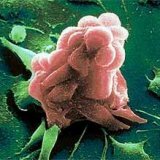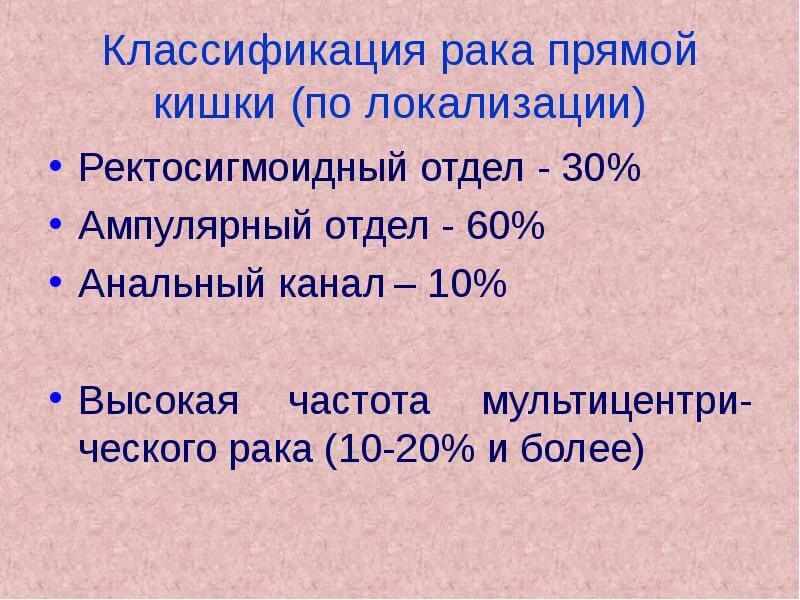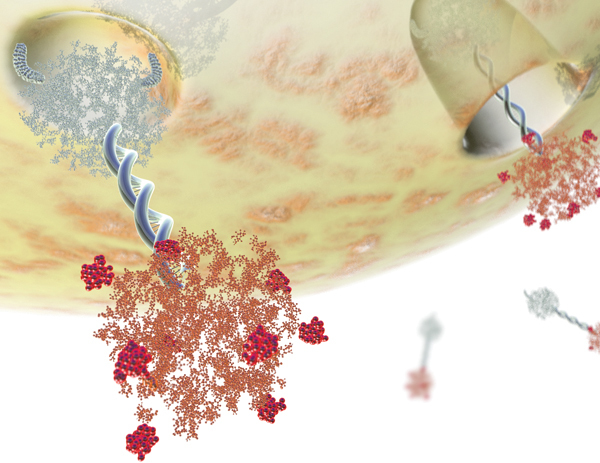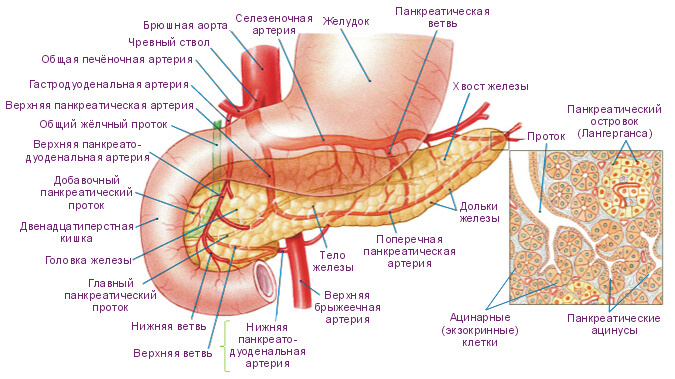Cancer of the blood: a description of the disease

What is blood cancer?
Leukemia( leukemia) is also not one disease, but several. All of them are characterized by the transformation of hematopoietic cells of a certain type into malignant ones. Cancer cells in this case begin to multiply rapidly and replace normal cells of blood and bone marrow. There are several types of leukemia depending on which blood cells turned into cancer cells. For example, lymphocytic leukemia is a defect in lymphocytes in the blood, myeloleukemia is a violation of the normal maturation of blood granulocyte leukocytes.
All leukemias according to the traditional classification are divided into acute and chronic. This division is associated with the different ability of tumors to differentiate proliferating cells. In the case of acute leukemia, it is practically absent, the blood accumulates a large number of nonfunctional blast cells. This entails the inhibition of normal hematopoiesis of germs. Chronic leukemia is characterized by a population of differentiated cells that are gradually replaced by normal peripheral blood cells.
In children chronic leukemia is extremely rare. They are also heterogeneous in their characteristics.
The diagnosis of "leukemia" is based only on a combination of bone marrow and blood tests. In this case, leukemia is not the most common oncological disease. According to the data of the American medical statistics, only 25 people out of a hundred thousand get sick every year. Scientists have noticed that leukemia happens most often in children( 4-5 years) and in elderly people( 60-69 years).
Causes of blood cancer
A person who suffers from leukemia, is sufficiently modified one single hematopoietic cell in a cancerous. Such a cell begins to quickly divide and cloning of tumor cells begins. Very tenacious rapidly multiplying cancer cells gradually completely replace normal, and leukemia develops.
Possible causes of mutations in normal cells are:
Ionizing radiation. For example, in Japan, after a number of nuclear explosions, the number of people with acute leukemia increased several fold. And people who were at a distance of 1.5 km from the epicenter were 45 times more likely to fall ill than those who were outside this zone.
Carcinogens. It can be some medicines( levomitsitin, butadion, cytostatics( antitumoral)), as well as chemicals( benzene, pesticides, oil distillation products, which are part of the paints).
Heredity. This applies mainly to the chronic form of leukemia, but in a family where there were patients with acute leukemia, the risk of getting sick 3-4 times increases. Doctors say that the inheritance is not transmitted by the disease itself, but by a cellular propensity to mutations.
Viruses. There are a number of special types of viruses that are embedded in human DNA, transforming a normal blood cell into a malignant one.
Depends on the occurrence of leukemia also from the race of a person or the geographical area of his residence.
Diagnosis
It's hardly possible to diagnose "leukemia" yourself, but you must pay attention to changes in your health. Acute leukemia is always accompanied by fever, dizziness, weakness, pain in the extremities, heavy bleeding. To this disease are often joined and various infectious complications: necrotic angina, ulcerative stomatitis. Lymph nodes, liver and spleen can also increase significantly.
With chronic leukemia, fatigue, weakness, poor appetite, weight loss are observed. At a later stage of the disease, infectious complications develop, and a tendency to thrombosis appears.
The diagnosis and description of the disease is given only by an oncologist on the basis of general and biochemical blood tests. It is also necessary to conduct bone marrow studies( trepanobiopsy, sternal puncture).
Treatment of
A combination of large doses of glucocorticoid hormones and several antitumor drugs is used to treat the acute form of leukemia. In some cases, a bone marrow transplant is possible. Supportive measures, such as transfusion of blood components and the rapid treatment of concomitant infections, are also very important.
Currently, chronic leukemias use antimetabolites - drugs that suppress the growth of malignant cells. Also sometimes use radiation therapy or the introduction of microdoses of radioactive substances, such as, for example, radioactive phosphorus.
The doctor chooses the treatment method depending on the form of leukemia. Tracking the patient's condition is conducted according to blood analysis and bone marrow examination. To be treated for blood cancer will have throughout life. Unlike any other disease, cancer never disappears without a trace.



